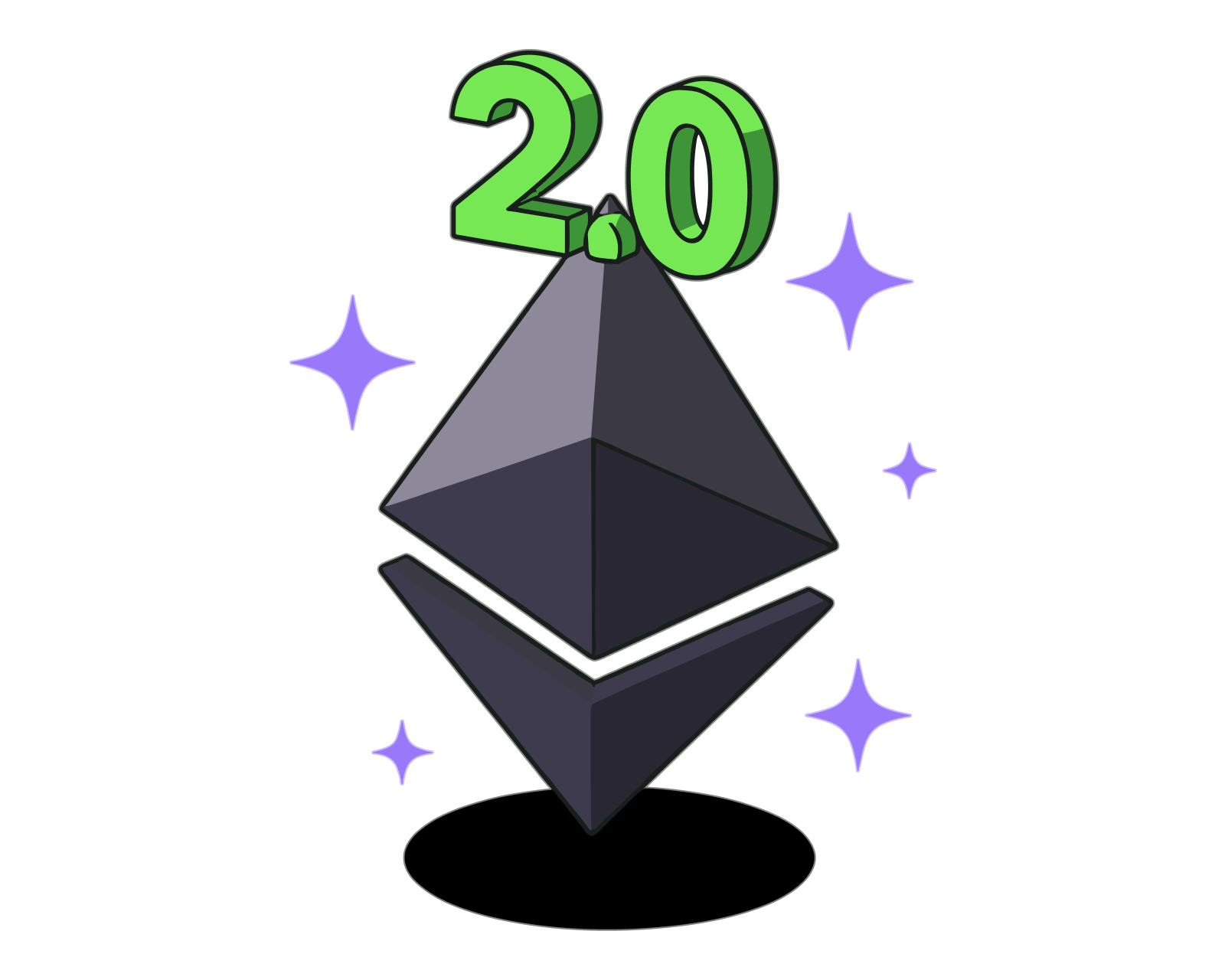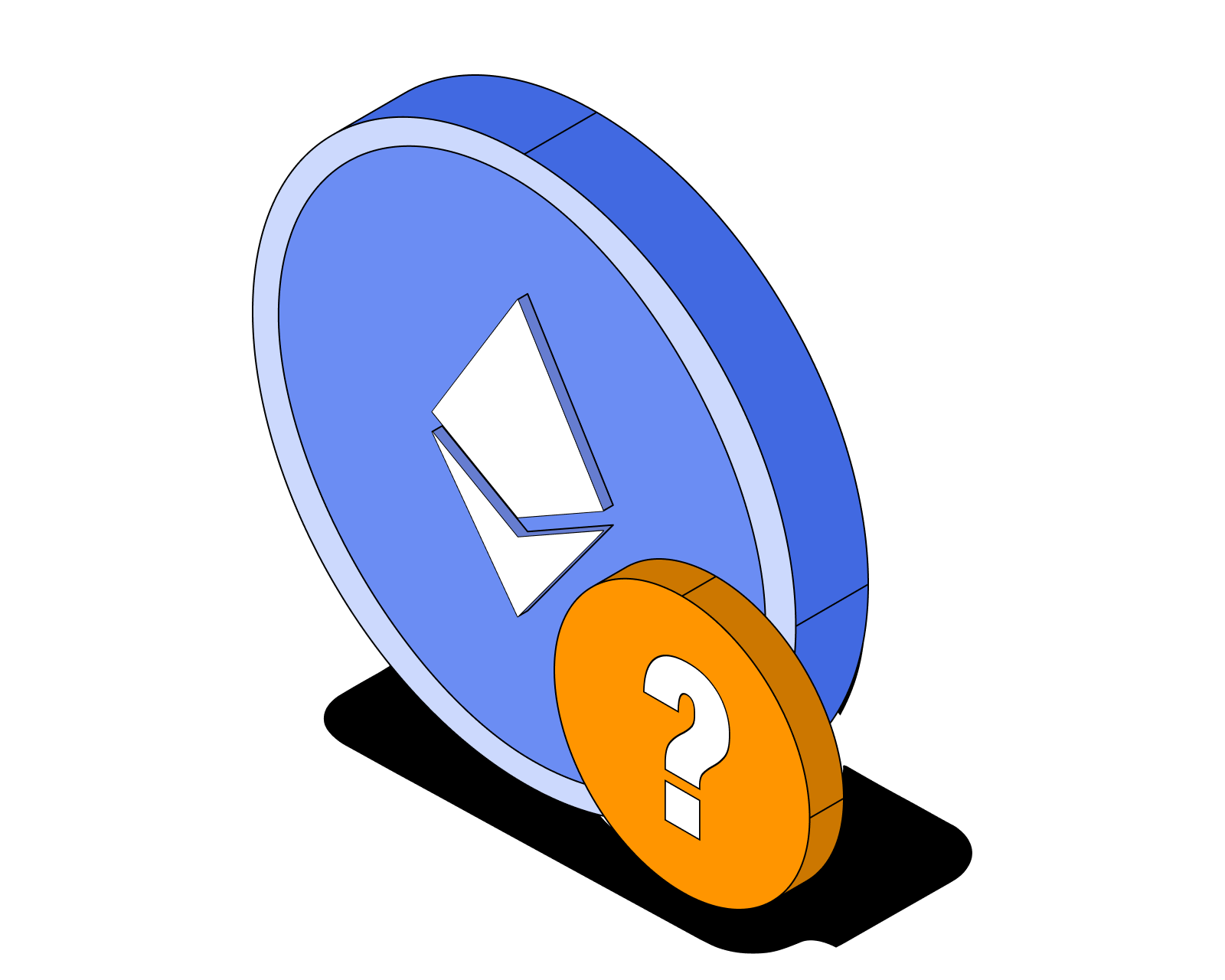What is Ethereum 2.0?

Table of Contents
What is Proof of Stake?
Proof of Stake is a type of consensus mechanism used by blockchain networks to achieve distributed consensus. In a Proof-of-Stake consensus mechanism, participants who have staked crypto assets (staking means "locking" them up by sending them to a specific smart contract) are selected at random to become validators who propose new blocks - and are rewarded for doing so. Validators thus take over the role held by miners in a Proof-of-Work system. Participants who violate the rules of the protocol are subject to forfeiture, in part or in full, of their staked assets. This carrot and stick approach is designed to incentivize participants to contribute to validating and ordering transactions in blocks in accordance with the rules of the protocol.
What are the advantages of Proof of Stake?
The most commonly cited advantages amongst the Ethereum community for moving to Proof of Stake are the following:
Improved energy efficiency. Because Proof of Stake doesn't require participants to dedicate processing power to a Proof-of-Work hashing algorithm, it consumes dramatically less energy. Estimates are that Ethereum 2.0 will consume less than 1% of the energy consumed by Proof of Work Ethereum.
Improved capacity to scale by supporting 'shard chains.' Shard chains (see below) increase transaction throughput by allowing a network to create multiple blocks simultaneously. While in a Proof-of-Work system sharding lowers the hashing power needed to compromise each portion of the network (thereby reducing the security of the entire network), in a Proof-of-Stake system, this is not the case. In other words, the move to Proof of Stake is required to enable sharding which, in turn, may be an effective scaling technology.
Increased decentralization. Because Proof of Stake does away with hash-power driven mining, the need for large and capital-intensive mining farms is eliminated. In theory, this should lower the barrier to entry for validators, decreasing the risk of centralization. Further, due to the large number of shard chains, the full move towards Ethereum 2.0 requires a large set of validators (more than 16,000). The contention is have this large number of validators will make the network less prone to manipulation by special interests.
What are the disadvantages of Proof of Stake?
Less proven. While Proof of Work has been battle-tested for over a decade in Bitcoin and since 2015 in Ethereum, Proof of Stake has less of a track record. Although Proof of Stake has been used in a number of public blockchains without incident, the relatively high complexity of its implementation in Ethereum means there may be as-yet unknown attack vectors or vulnerabilities.
The rich get richer. A common criticism of Proof of Stake in Ethereum is that, because there is essentially no cost to mining, and because the more ETH you stake, the more rewards you receive, those who already have the most capital will continue to accrue more capital. By contrast, while it's true that Bitcoin mining is a highly capital-intensive endeavor, the profit margin is narrow. This means that most of the bitcoin earned by miners must be sold to cover their mining costs - and by selling, miners are distributing most of the newly minted Bitcoin (and fees) to wider participants, thereby distributing new Bitcoin widely.
What Is sharding?
Sharding is a scaling technique designed to significantly improve the efficiency and capacity of a blockchain network. It involves partitioning the network's entire state into multiple smaller, manageable pieces, known as "shards." Each shard operates almost like a separate blockchain, with its own set of account balances and smart contracts. However, unlike completely independent blockchains, shards communicate and coordinate with one another through the main chain or a layer that ensures security and data consistency across the entire network.
In the context of Ethereum 2.0, sharding aims to address scalability by distributing the data processing responsibility across multiple shards. Each shard will be capable of processing transactions and smart contracts independently, thereby increasing the overall capacity of the network. The initial implementation of sharding in Ethereum 2.0 is expected to focus primarily on improving data availability, which in turn will enhance the scalability of layer-2 solutions by allowing them to reference data stored on shard chains.
Validators will play a crucial role in the security and operation of the sharded Ethereum network. They will be randomly assigned to different shards, ensuring that no single shard is overly influenced or controlled by a specific group of validators. This random assignment helps enhance the security of the network by making it more resistant to coordinated attacks or manipulation.
As Ethereum continues to evolve, the specifics of sharding and its implementation might be refined.
Eth 2.0 Timeline
The move towards Eth 2.0 is a gradual, multi-phase transition that is taking place along the following timeline:
Beacon Chain. Successfully deployed in December 2020, the Beacon Chain introduced a Proof-of-Stake (PoS) consensus mechanism, operating in parallel with the existing Ethereum network. This phase did not yet process transactions or smart contracts but laid the groundwork for a new PoS consensus model. A "beacon chain" was established to store the registry of validators and run in parallel to Ethereum mainnet, but during the Beacon Chain phase, Ethereum continued to rely on the Proof-of-Work consensus mechanism.
The Merge. Completed in September 2022, this pivotal phase saw the original Ethereum mainnet, running on Proof-of-Work (PoW), seamlessly merging with the Beacon Chain's PoS system. This transition marked the end of energy-intensive mining on Ethereum, fully adopting PoS for network security and consensus. As a result, Ethereum's energy consumption dropped significantly, paving the way for more efficient and scalable blockchain operations.
Sharding. Post-Merge, Ethereum plans to implement sharding to drastically increase network capacity and reduce transaction fees. Sharding will split the network into multiple portions (shards), each capable of processing transactions and smart contracts independently. This will expand the overall capacity of the Ethereum network, allowing it to process many more transactions per second and making it more accessible to users worldwide. The initial stages of sharding will focus on distributing data across shards, with later phases aiming to enable shards to independently execute smart contracts and manage accounts, further enhancing the network's scalability and efficiency. The introduction of sharding is anticipated to begin in phases.
Related guides
Start from here →

What is Ethereum?
Understand Ethereum's key characteristics.


What is ETH used for?
Understand the function and utility of ETH.

Who created Ethereum?
Understand the origin and early history of the Ethereum protocol.
Read this article →
Who created Ethereum?
Understand the origin and early history of the Ethereum protocol.

How was ETH initially distributed?
Learn about the 2014 crowdsale, the initial distribution of ether (ETH), and why it's important.
Read this article →
How was ETH initially distributed?
Learn about the 2014 crowdsale, the initial distribution of ether (ETH), and why it's important.

What's a smart contract?
Get the basics on the "software" that runs on decentralized networks.
Read this article →
What's a smart contract?
Get the basics on the "software" that runs on decentralized networks.
STAY AHEAD IN CRYPTO
Stay ahead in crypto with our weekly newsletter delivering the insights that matter most
Weekly crypto news, curated for you
Actionable insights and educational tips
Updates on products fueling economic freedom
No spam. Unsubscribe anytime.



Start investing safely with the Bitcoin.com Wallet
Over wallets created so far
Everything you need to buy, sell, trade, and invest your Bitcoin and cryptocurrency securely

© 2025 Saint Bitts LLC Bitcoin.com. All rights reserved


